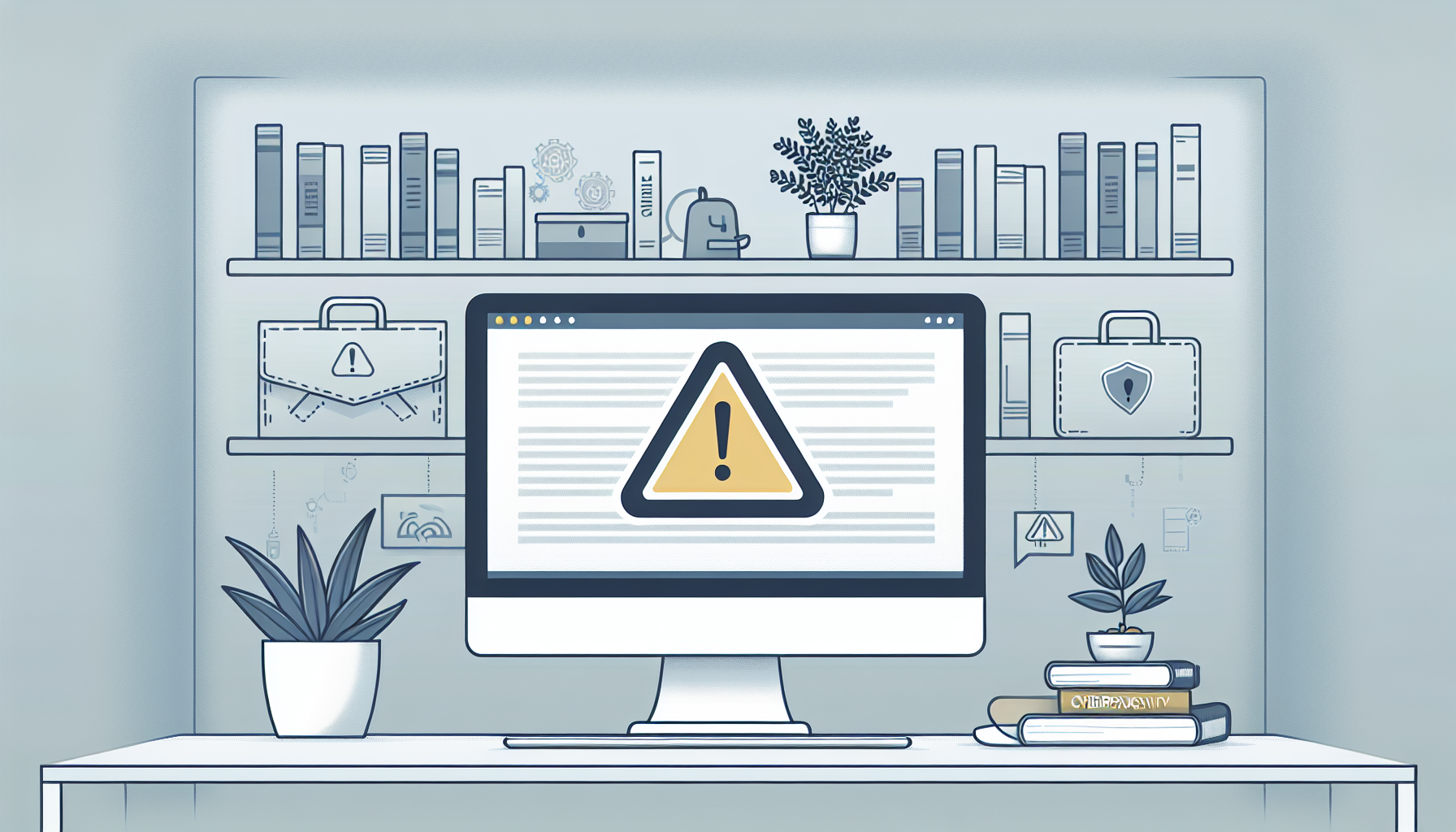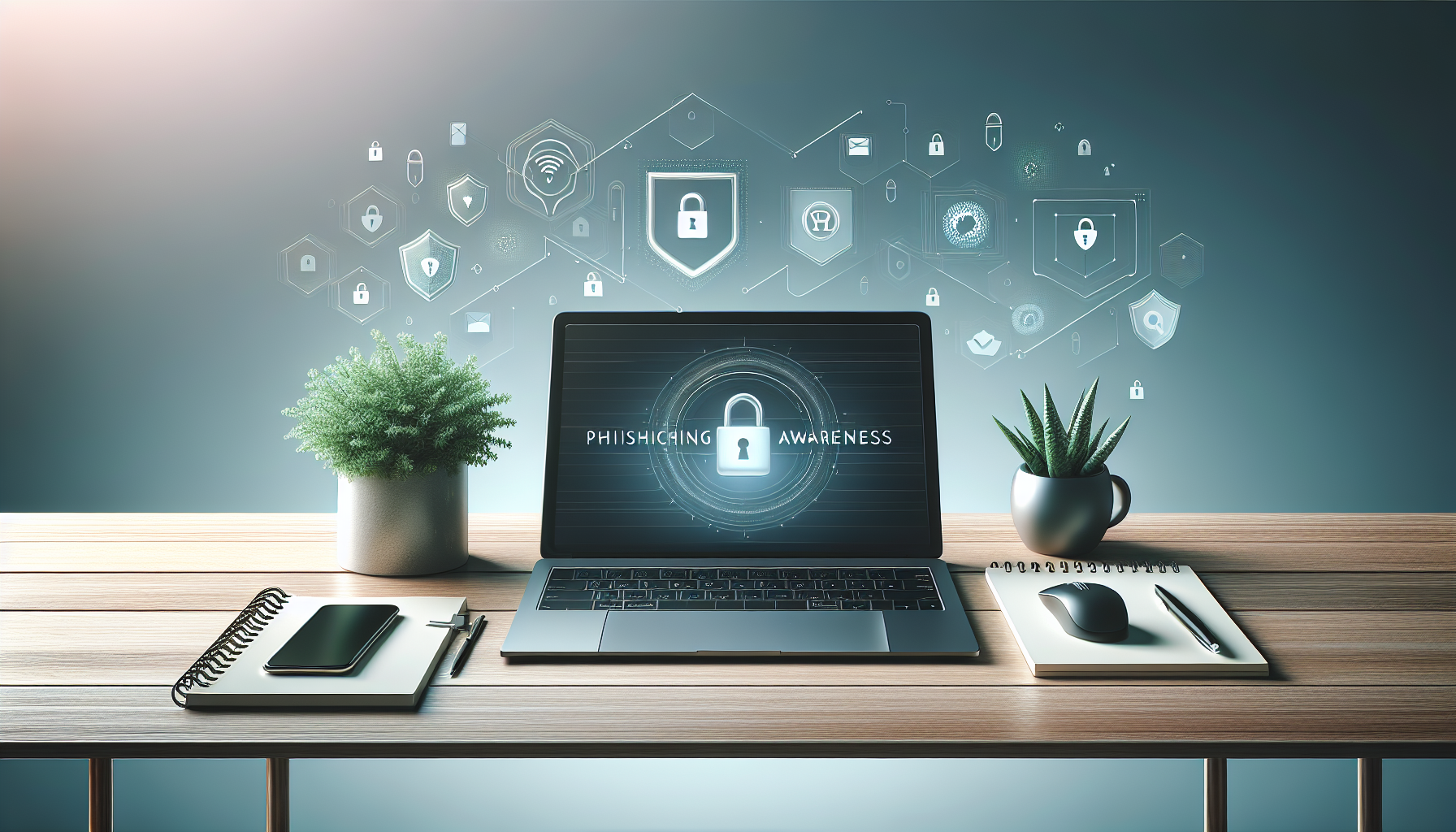Phishing scams are sneaky and can leave anyone feeling vulnerable. If you’ve ever received a questionable email claiming to be from your bank or a popular website, you know the gut-wrenching feeling of uncertainty. You’re definitely not alone in this struggle!
But don’t worry! If you stick around, you’ll discover some fantastic ChatGPT prompts designed to help you thwart these scams and protect yourself and your organization. With the right tips and tricks, you can turn the tables on phishing attacks.
From creating strong email filters to generating realistic phishing simulations, we’ll cover all the essentials to boost your defense against these crafty con artists. Let’s dive in and arm ourselves with knowledge!
Key Takeaways
- Phishing scams impersonate legitimate entities to steal personal information.
- Use ChatGPT prompts to improve your phishing prevention strategies.
- Creating strong email filters can reduce phishing risks significantly.
- Employee education is crucial for recognizing and responding to phishing attempts.
- Simulating phishing attacks enhances training and prepares staff for real threats.
- Analyze suspicious emails with specific prompts to identify red flags.
- Develop a clear response plan for handling phishing incidents effectively.
- Utilize various tools and resources recommended by ChatGPT for phishing awareness.

Effective ChatGPT Prompts for Phishing Prevention
Phishing scams are a serious threat to individuals and organizations alike.
Using ChatGPT, you can create prompts to help improve phishing awareness and prevention.
Here are some effective prompts you can copy and use:
- “List the top 10 phishing prevention strategies for businesses.”
- “Explain how ChatGPT can assist in automating phishing detection.”
- “What are some interactive phishing prevention tools that utilize ChatGPT?”
- “Generate a set of phishing awareness questions for an employee training session.”
- “How can machine learning enhance cybersecurity against phishing?”
Incorporating these prompts can help facilitate thoughtful conversations about phishing prevention in your organization.
Understanding Phishing and Its Risks
Phishing is a cybercrime where attackers impersonate legitimate entities to steal sensitive information.
There are various types of phishing attacks, including email phishing, spear phishing, and vishing (voice phishing).
Risk factors include a lack of employee training and outdated security measures, which can make organizations more vulnerable.
The impact of phishing can be devastating, resulting in financial losses, data breaches, and reputational damage.
In 2023, phishing remains one of the most common cyber threats, with billions lost annually due to these scams.
Phishing often relies on social engineering tactics, manipulating human emotions to trick victims into providing information.
Understanding how phishing works is crucial in developing effective prevention strategies.
How to Create Strong Email Filters Using ChatGPT
Creating strong email filters is essential for reducing phishing risks.
Start by inputting the appropriate criteria for filtering and identifying suspicious emails.
Here’s how you can use ChatGPT to help build effective email filters:
- “Show me email filtering techniques that block phishing attempts.”
- “What are the key differences between spam and phishing emails?”
- “Generate a list of automated email scanning methods to detect threats.”
- “Help me create specific email rules that flag messages from unknown senders.”
- “What are best practices for email security to prevent phishing?”
Implementing these tips can significantly enhance your organization’s email security posture.
Prompts for Educating Employees About Phishing
Employee education is a cornerstone of effective phishing prevention.
You can use ChatGPT to craft prompts that enhance phishing awareness training.
Try these practical prompts to get started:
- “Create a phishing awareness training outline for employees.”
- “List the best practices for reporting phishing emails.”
- “Design a phishing scenario for role-playing exercises with employees.”
- “What are some effective ways to promote phishing vigilance in the workplace?”
- “Generate engaging content ideas for a phishing awareness campaign.”
Using these educational prompts can help foster a culture of vigilance and security in your organization.
If you want to explore more about improving employee training, check out our post on ChatGPT for Education.
You might also find valuable insights on enriching your communication strategies with ChatGPT for Customer Service.

Generating Phishing Simulation Scenarios with ChatGPT
Creating phishing simulation scenarios is an effective way to train employees on recognizing and responding to phishing attacks.
With ChatGPT, you can generate realistic scenarios that mimic common phishing tactics.
Here are some prompts you can use to create engaging phishing simulations:
- “Generate a phishing email scenario that includes impersonation of a company executive.”
- “Create a role-play exercise based on a vishing attack targeting customer service representatives.”
- “Design a phishing simulation where the email requests urgent personal information.”
- “Write a detailed phishing scenario involving fake account verification requests.”
- “What are the key indicators of a phishing attack that should be included in a simulation?”
By using these prompts, you can build a comprehensive training program that prepares employees for real-world phishing attempts.
Using ChatGPT to Analyze Suspicious Emails
Analyzing suspicious emails is crucial for identifying potential phishing threats.
ChatGPT can help you examine the language and structure of emails to spot red flags.
These prompts can guide you in effectively analyzing emails:
- “Evaluate this email for signs of phishing: [insert email text].”
- “Identify suspicious language patterns in emails that might indicate phishing.”
- “Analyze the email headers of this message to find possible threats: [insert header info].”
- “What common characteristics can be found in phishing emails?”
- “Help me determine if this email is a phishing attempt or a legitimate request.”
Utilizing these prompts allows your team to adopt a proactive approach when dealing with uncertain communications.
Developing a Phishing Response Plan with ChatGPT
Having a well-defined phishing response plan can mitigate the impact of successful attacks.
ChatGPT can assist in shaping this plan by outlining essential steps to take after a phishing incident.
Consider these prompts for developing a comprehensive response strategy:
- “Outline actionable steps to take immediately after suspecting a phishing attack.”
- “Create a flowchart that describes the phishing response process.”
- “What information should be collected during a phishing attack investigation?”
- “Generate a communication template for notifying employees about a phishing incident.”
- “List the best practices for training staff on responding to phishing attacks.”
Leveraging these prompts ensures that your organization is prepared to respond efficiently and effectively to any phishing threat.
Tools and Resources for Phishing Awareness Featuring ChatGPT
Awareness tools and resources are vital for educating staff about phishing risks and prevention strategies.
ChatGPT can suggest various resources to bolster your organization’s phishing awareness efforts.
Here are some prompts to find useful tools and resources:
- “Recommend online courses for phishing awareness training.”
- “List community resources available for improving phishing prevention skills.”
- “What are some effective phishing detection tools that companies can utilize?”
- “Share government resources for cybersecurity and phishing prevention.”
- “Identify apps and software that assist in phishing awareness campaigns.”
Using these resources can strengthen your security education programs and help create a more informed workforce.

Effective ChatGPT Prompts for Phishing Prevention
Phishing scams are a serious threat to individuals and organizations alike.
Using ChatGPT, you can create prompts to help improve phishing awareness and prevention.
Here are some effective prompts you can copy and use:
- “List the top 10 phishing prevention strategies for businesses.”
- “Explain how ChatGPT can assist in automating phishing detection.”
- “What are some interactive phishing prevention tools that utilize ChatGPT?”
- “Generate a set of phishing awareness questions for an employee training session.”
- “How can machine learning enhance cybersecurity against phishing?”
Incorporating these prompts can help facilitate thoughtful conversations about phishing prevention in your organization.
Understanding Phishing and Its Risks
Phishing is a cybercrime where attackers impersonate legitimate entities to steal sensitive information.
There are various types of phishing attacks, including email phishing, spear phishing, and vishing (voice phishing).
Risk factors include a lack of employee training and outdated security measures, which can make organizations more vulnerable.
The impact of phishing can be devastating, resulting in financial losses, data breaches, and reputational damage.
In 2023, phishing remains one of the most common cyber threats, with billions lost annually due to these scams.
Phishing often relies on social engineering tactics, manipulating human emotions to trick victims into providing information.
Understanding how phishing works is crucial in developing effective prevention strategies.
How to Create Strong Email Filters Using ChatGPT
Creating strong email filters is essential for reducing phishing risks.
Start by inputting the appropriate criteria for filtering and identifying suspicious emails.
Here’s how you can use ChatGPT to help build effective email filters:
- “Show me email filtering techniques that block phishing attempts.”
- “What are the key differences between spam and phishing emails?”
- “Generate a list of automated email scanning methods to detect threats.”
- “Help me create specific email rules that flag messages from unknown senders.”
- “What are best practices for email security to prevent phishing?”
Implementing these tips can significantly enhance your organization’s email security posture.
Prompts for Educating Employees About Phishing
Employee education is a cornerstone of effective phishing prevention.
You can use ChatGPT to craft prompts that enhance phishing awareness training.
Try these practical prompts to get started:
- “Create a phishing awareness training outline for employees.”
- “List the best practices for reporting phishing emails.”
- “Design a phishing scenario for role-playing exercises with employees.”
- “What are some effective ways to promote phishing vigilance in the workplace?”
- “Generate engaging content ideas for a phishing awareness campaign.”
Using these educational prompts can help foster a culture of vigilance and security in your organization.
If you want to explore more about improving employee training, check out our post on ChatGPT for Education.
You might also find valuable insights on enriching your communication strategies with ChatGPT for Customer Service.
Generating Phishing Simulation Scenarios with ChatGPT
Creating phishing simulation scenarios is an effective way to train employees on recognizing and responding to phishing attacks.
With ChatGPT, you can generate realistic scenarios that mimic common phishing tactics.
Here are some prompts you can use to create engaging phishing simulations:
- “Generate a phishing email scenario that includes impersonation of a company executive.”
- “Create a role-play exercise based on a vishing attack targeting customer service representatives.”
- “Design a phishing simulation where the email requests urgent personal information.”
- “Write a detailed phishing scenario involving fake account verification requests.”
- “What are the key indicators of a phishing attack that should be included in a simulation?”
By using these prompts, you can build a comprehensive training program that prepares employees for real-world phishing attempts.
Using ChatGPT to Analyze Suspicious Emails
Analyzing suspicious emails is crucial for identifying potential phishing threats.
ChatGPT can help you examine the language and structure of emails to spot red flags.
These prompts can guide you in effectively analyzing emails:
- “Evaluate this email for signs of phishing: [insert email text].”
- “Identify suspicious language patterns in emails that might indicate phishing.”
- “Analyze the email headers of this message to find possible threats: [insert header info].”
- “What common characteristics can be found in phishing emails?”
- “Help me determine if this email is a phishing attempt or a legitimate request.”
Utilizing these prompts allows your team to adopt a proactive approach when dealing with uncertain communications.
Developing a Phishing Response Plan with ChatGPT
Having a well-defined phishing response plan can mitigate the impact of successful attacks.
ChatGPT can assist in shaping this plan by outlining essential steps to take after a phishing incident.
Consider these prompts for developing a comprehensive response strategy:
- “Outline actionable steps to take immediately after suspecting a phishing attack.”
- “Create a flowchart that describes the phishing response process.”
- “What information should be collected during a phishing attack investigation?”
- “Generate a communication template for notifying employees about a phishing incident.”
- “List the best practices for training staff on responding to phishing attacks.”
Leveraging these prompts ensures that your organization is prepared to respond efficiently and effectively to any phishing threat.
Tools and Resources for Phishing Awareness Featuring ChatGPT
Awareness tools and resources are vital for educating staff about phishing risks and prevention strategies.
ChatGPT can suggest various resources to bolster your organization’s phishing awareness efforts.
Here are some prompts to find useful tools and resources:
- “Recommend online courses for phishing awareness training.”
- “List community resources available for improving phishing prevention skills.”
- “What are some effective phishing detection tools that companies can utilize?”
- “Share government resources for cybersecurity and phishing prevention.”
- “Identify apps and software that assist in phishing awareness campaigns.”
Using these resources can strengthen your security education programs and help create a more informed workforce.
FAQs
Phishing is a fraudulent attempt to obtain sensitive information by tricking individuals into providing it. It can lead to data breaches, financial loss, and identity theft, posing significant risks to both individuals and organizations.
Utilize engaging training sessions, interactive simulations, and real-life examples to educate employees about phishing. Use ChatGPT prompts to create educational materials that clarify phishing tactics and reinforce proper reporting procedures.
Tools like email filters, phishing simulation software, and user training platforms enhance phishing awareness. ChatGPT can assist in generating content for these tools, making educational resources available and understandable for employees.
ChatGPT can assist in analyzing suspicious emails by identifying red flags, such as poor grammar, unusual requests, and mismatched URLs. It can guide users in evaluating the legitimacy of requests and deciding on further actions.
